Sailing at Broad Reach: Beginner’s Essentials
Whether you’re new to sailing or looking to sharpen your skills, this how-to guide with helpful illustrations has you covered, helping you build a strong foundation for sailing at Broad Reach.
If you're new to the world of sailing, this simple and clear guide will walk you through the essentials. In this comprehensive guide we'll break down the fundamentals of sailing into simple steps and provide definitions and images to ensure that even beginners can grasp the fundamentals.
Let's start with the basics. The Mast is a tall vertical pole used for hoisting sails. It is fixed in place by steel cables running from the top of the Mast to the four sides of the boat. The cables pull each on its side, thus supporting the Mast fixity.
There are ropes (lines) that come through the Mast. These lines are fastened to the sails. Thus, to raise the sail, you need to pull the appropriate line.
The Boom, on the other hand, is a horizontal pole that attaches to the Mast through a movable joint. Its far end can be turned left or right, up or down, so you can adjust its position with special lines (for more on lines, read below).
⚠️ Note that all the ropes on the boat are called lines.
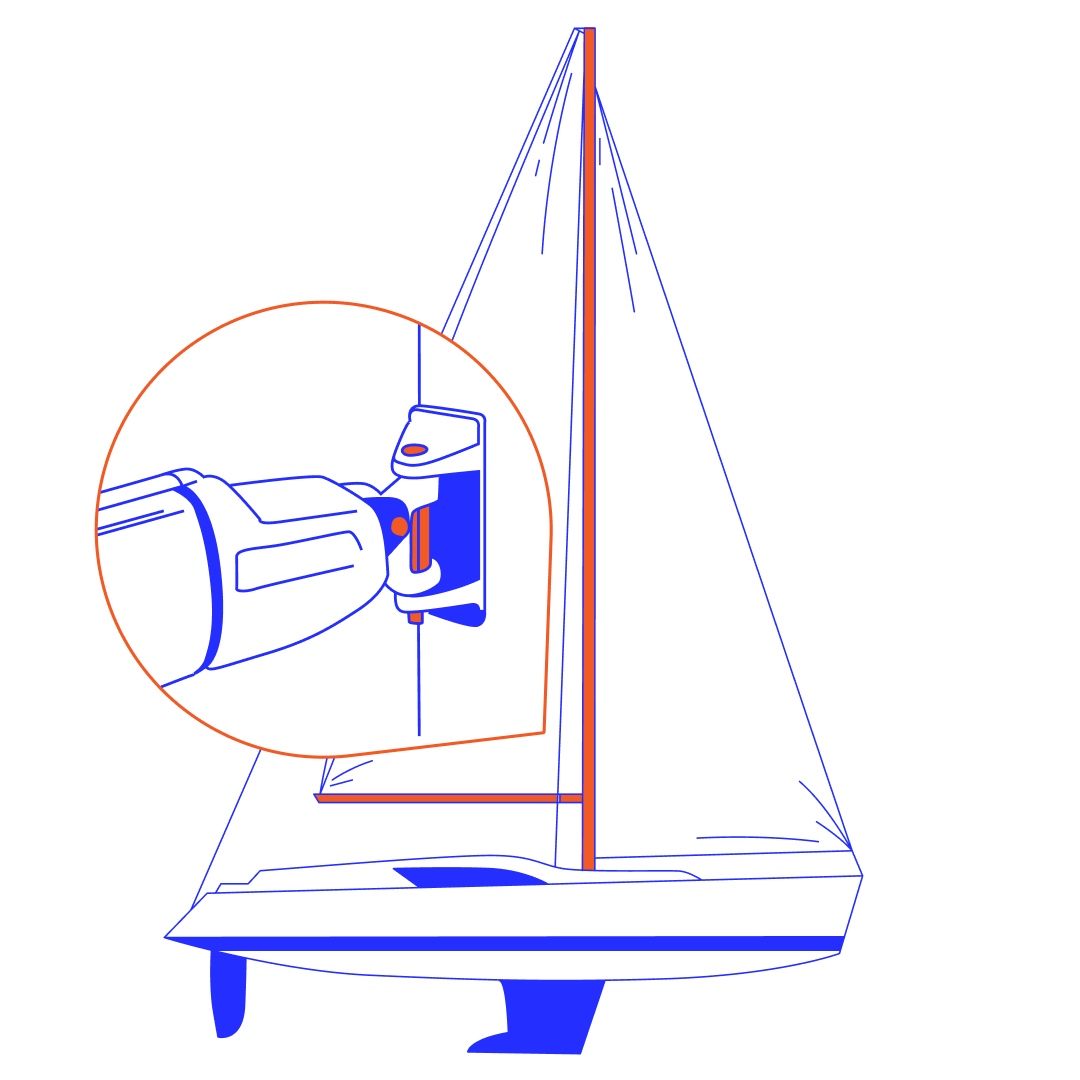
To control the sails, you'll need to become familiar with two essential lines: the Halyard and the Sheet. The Halyard is used to raise and lower the sail, and the Sheet is used to trim (adjust) the sails in response to wind changes.
The Halyard is attached to the top corner of the sail with one end, and its other end goes through the mast to the back of the boat, where the steering wheel is located. This gives a skipper control over the sail height by tightening the Halyard or easing it out.
The Sheet is attached to the back side of the sail and used to adjust the position of the sail. Pull the Sheet to hold the sail closer to the boat, and ease the Sheet to release the sail. To know how the wind fills the sails read below.
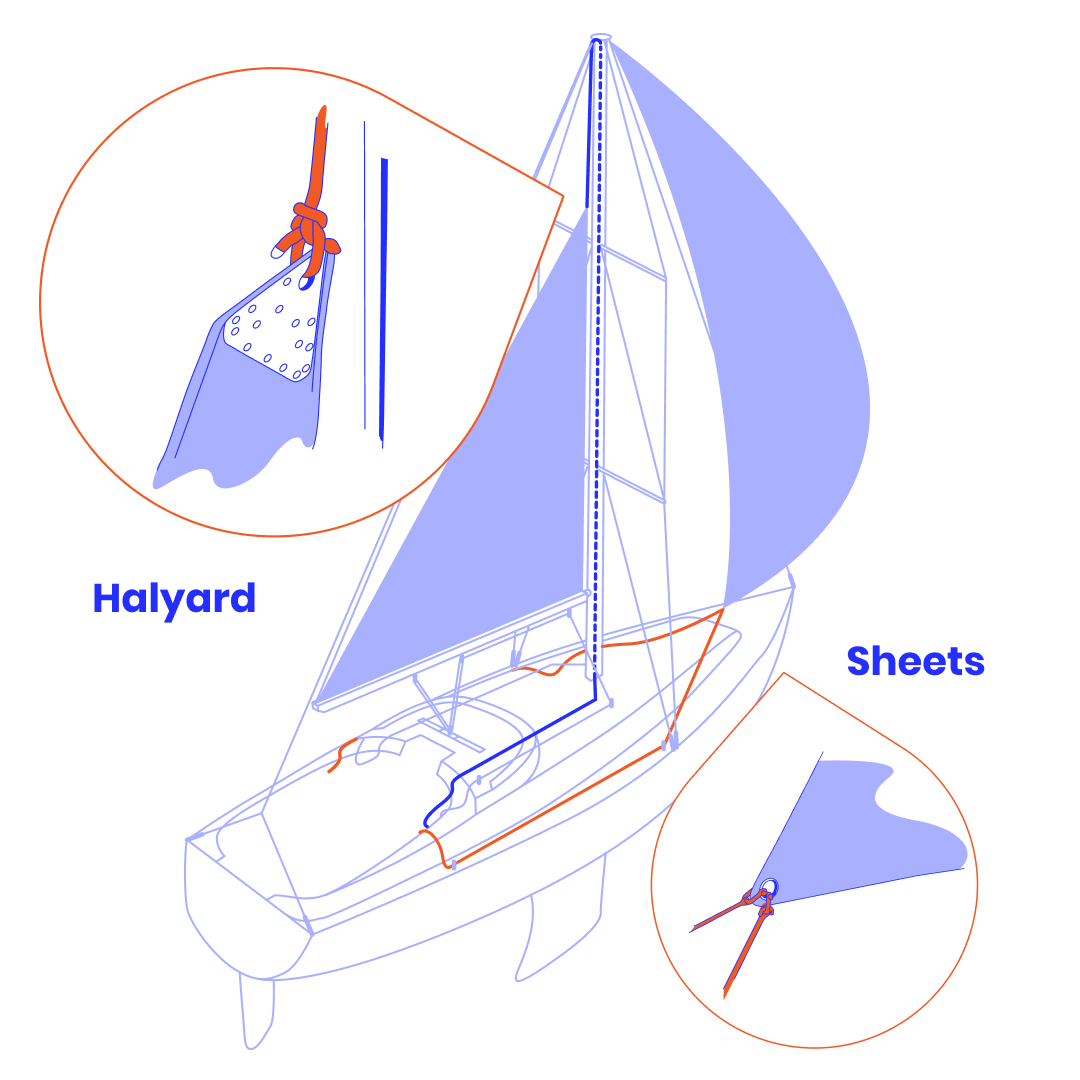
Sailboats typically have two main types of sails: the Mainsail and the Headsail. The Headsail is located in front of the mast. It’s also called the Foresail, but the most common term is the Jib.
The Mainsail is located behind the mast. As the name implies, this is the main sail, which is usually attached to the mast and boom, and can be alone sufficient for sailing in some cases.
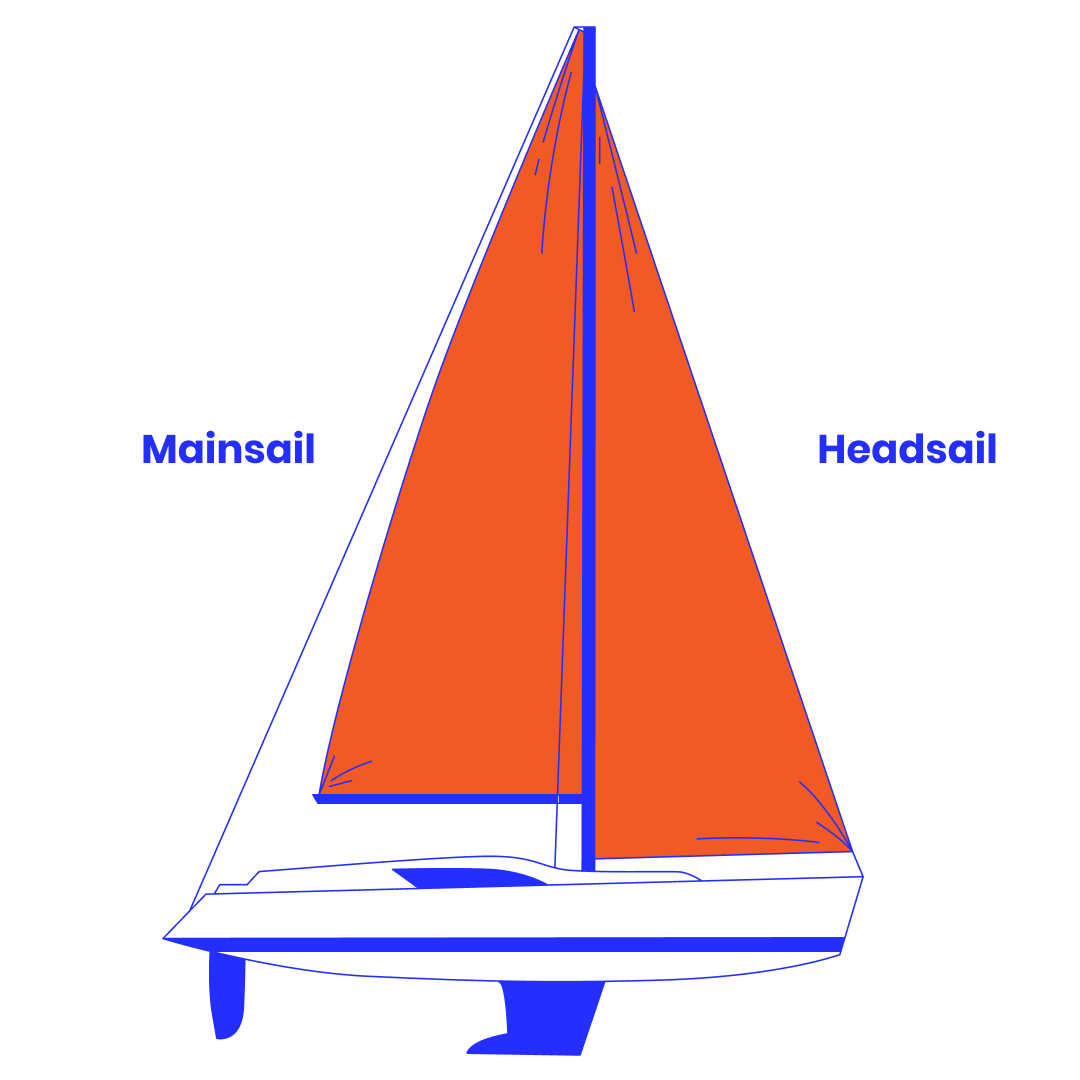
To have control over the sails, you need to know that they are handled with the lines, so we can only pull the line on ourselves, while the sail pulls it back in thanks to the wind.
To control the headsail, there are two Jib-Sheets. When one of them is tightened, it’s considered as the working sheet, while the other is considered as the lazy one (and vice versa).
To control the mainsail, there is the Main-Sheet, that releases or pulls the boom, on which the mainsail is located, thus setting the trim of the mainsails.
If you ease the sheets out, the sails will get filled with wind, and if you tighten the sheets, the sails will take on less wind. This is how the sail control works.
⚠️ Mastering sail control allows you to harness the wind's power efficiently.
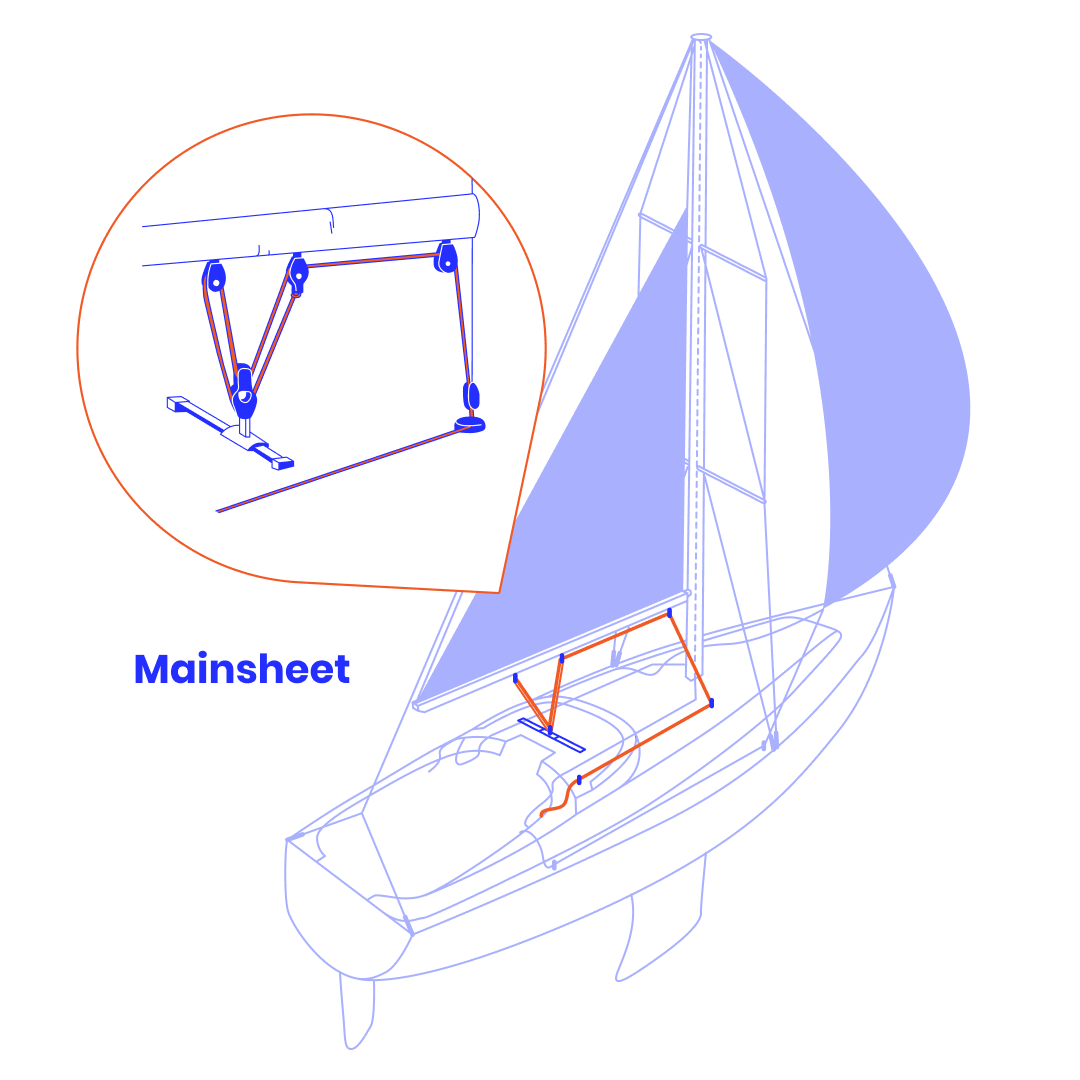
Setting up sails involves hoisting (raising) the sails using the halyards. Start with the mainsail, then move on to the headsail. Otherwise, it may be difficult to hoist the mainsail.
To safely hoist the mainsail, turn the boat with its front into the wind's direction. This ensures that the wind flows evenly around the mainsail, preventing interference while raising it.
In straightforward terms, sailing boils down to properly positioning the boat in relation to the wind direction, and effectively managing sails tension.
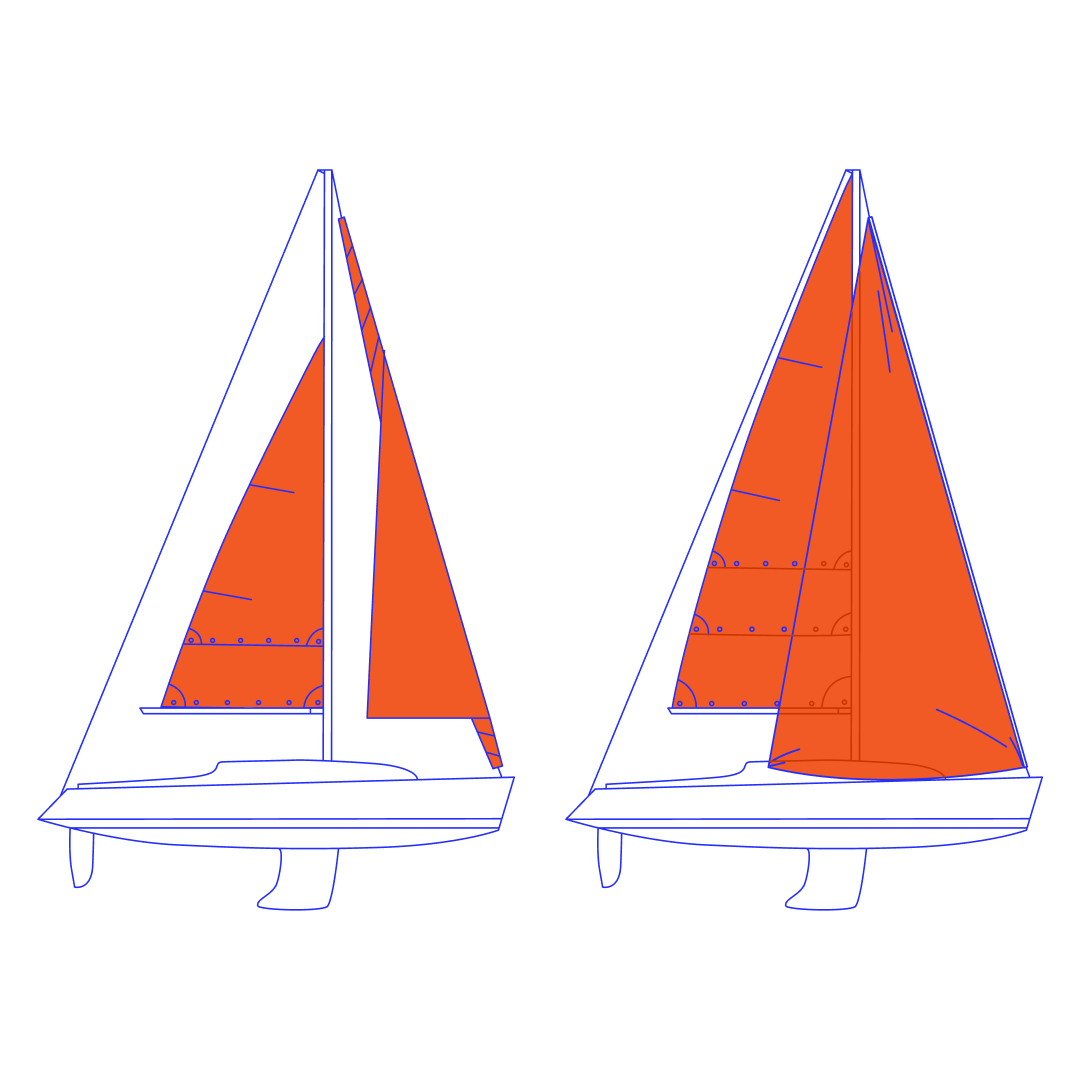
Understanding sailing terminology is essential. A “Tack” is a nautical term for the direction of a boat relative to the wind flow.
Port tack means the wind is coming from the left (port) side of the boat, while Starboard tack means the wind is coming from the right (starboard) side of the boat.
When the wind blows from the left side, the sails will be over the right side of a boat, and when the wind blows from the right side, the sails will be over the left side of a boat.
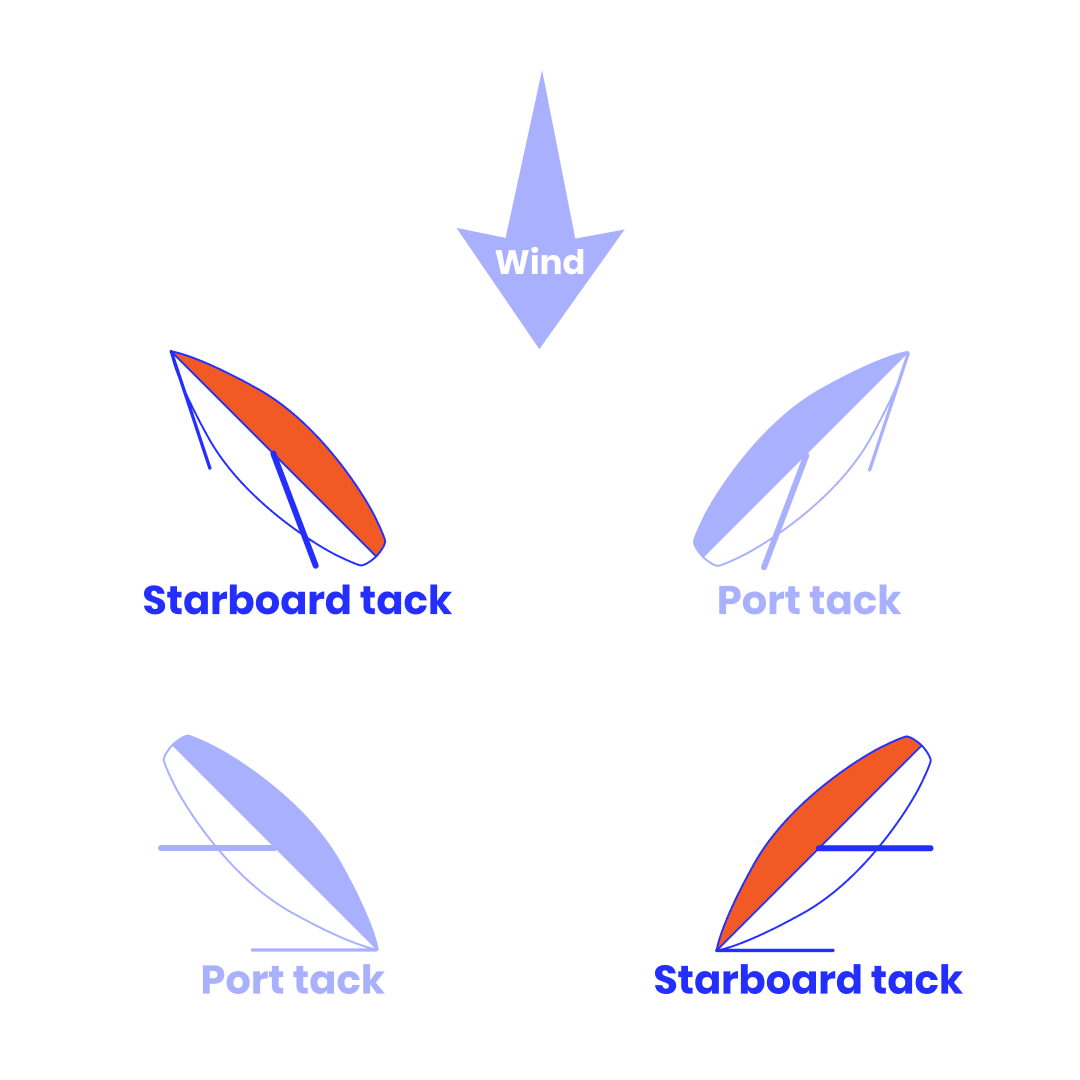
Points of sail simply means the different angles at which a sailboat can travel in relation to the direction of the wind. It's like the boat's position on a clock face.
There are eight primary Points of sail, which describe the boat's angle to the wind:
Making the boat head to wind will result in the wind flowing evenly along both sides of the sails and the boat’s inability to sail. This point is called In irons.
The opposite one is called Dead run, and it’s also not the best option since the wind can unexpectedly throw the boom to the other side of a boat causing injuries to untrained sailors.
Between them, there are three main points of the boat relative to the wind—Close reach, Beam reach, and Broad reach. They apply equally to sailing on port and starboard tack.
⚠️ Pay attention to the position of the sails. Each point of sail requires different sail adjustments for optimal performance. To sailing up-wind and down-wind, use a zigzag maneuver, called Tacking and Jibing respectively.

Sailing doesn't have to break the bank. Many sailing schools and clubs offer free or affordable beginner lessons. With this simple guide, you're well on your way to becoming a sailor. We provide a free Crew Member Course to start your sailing journey without a hefty price tag. So, hoist your sails, catch the wind, and embark on your sailing adventure today!
Receive email notifications whenever we publish new and exciting content, stay informed and inspired!
Learning to sail has never been this interactive and accessible. Explore our engaging sailing course today, it's free and fun! The mobile app is available on both iOS and Android
Receive email notifications whenever we publish new and exciting content, stay informed and inspired!